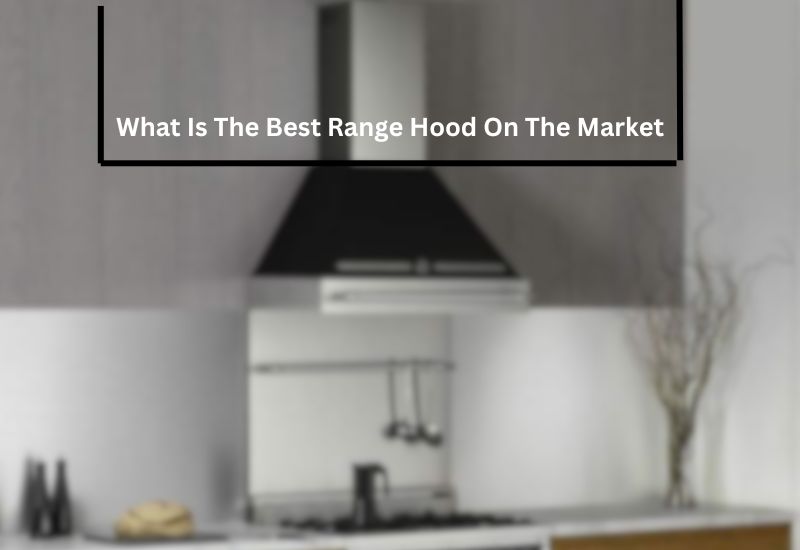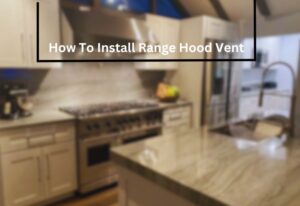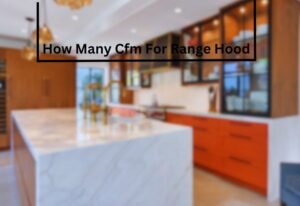In the realm of modern kitchens, where delectable aromas blend with culinary creativity, the range hood emerges as an unsung hero, quietly improving air quality and aesthetics. A well-chosen range hood not only dissipates cooking odors but also helps maintain a clean environment by trapping grease and smoke. With an array of options flooding the market, finding the best range hood can be a daunting task. Fear not, as we embark on a journey to uncover the finest range hoods available today.
What Is The Best Range Hood On The Market? Determining the absolute best range hood on the market can vary based on specific needs and preferences. However, popular options renowned for performance and features include brands like Broan, Zephyr, and KitchenAid. Thorough research and consideration of factors such as size, noise level, and ventilation power are crucial for an informed choice.
From sleek under-cabinet models to stylish island designs, we’ll delve into features, performance, and user experiences to guide you towards the ideal choice for your kitchen. Join us as we navigate through the world of ventilation innovation, simplifying the process of selecting a range hood that seamlessly combines functionality and style.
Key Considerations for Choosing the Ideal Range Hood

A range hood is a crucial kitchen appliance that serves to maintain air quality, remove odors, and extract cooking fumes from the kitchen environment.
When selecting the ideal range hood for your kitchen, several key considerations must be taken into account to ensure optimal performance and functionality.
Kitchen Size and Layout:
The size and layout of your kitchen play a significant role in determining the type of range hood that suits your needs. Larger kitchens may require more powerful hoods with higher airflow rates to effectively remove cooking odors and fumes.
Additionally, consider the positioning of your range or cooktop within the kitchen layout to determine the appropriate hood installation location. A centralized location ensures efficient capture of airborne particles.
Airflow and Extraction Rate:
One of the most critical factors in choosing a range hood is the airflow capacity or extraction rate. This is typically measured in cubic feet per minute (CFM). The ideal airflow rate depends on the size of your kitchen, the type of cooking you do, and the heat output of your appliances.
Gas stoves and high-heat cooking demand higher CFM ratings, while standard cooking may suffice with lower CFM models. It’s essential to strike a balance between effective extraction and noise level, as higher CFM models can be louder.
Venting Options:
Range hoods can be vented either externally (ducted) or internally (recirculating). Ducted hoods expel air outdoors, offering more efficient removal of pollutants. However, they require access to an exterior wall or roof for vent installation.
Recirculating hoods, on the other hand, filter air through charcoal or other filters before recirculating it back into the kitchen. While they are more versatile in terms of installation, they might not be as effective in removing all pollutants.
Noise Levels:
The noise generated by a range hood can significantly impact the comfort of your kitchen environment. Higher CFM models tend to produce more noise due to the increased air movement.
If you value a quieter cooking experience, consider hoods with lower sone ratings (a measurement of perceived noise level) or those equipped with noise reduction technology. Some range hoods come with variable fan speeds, allowing you to adjust the noise levels based on your cooking needs.
Style and Aesthetics:
The range hood’s design should harmonize with your kitchen’s overall aesthetics. Hoods are available in various styles, from under-cabinet and wall-mounted to island and downdraft options.
Choose a finish and shape that complements your kitchen’s decor, whether that’s stainless steel, glass, or custom cabinetry panels. A well-chosen range hood not only enhances functionality but also becomes a focal point in your kitchen’s design.
Top Features to Look for in a High-Quality Range Hood
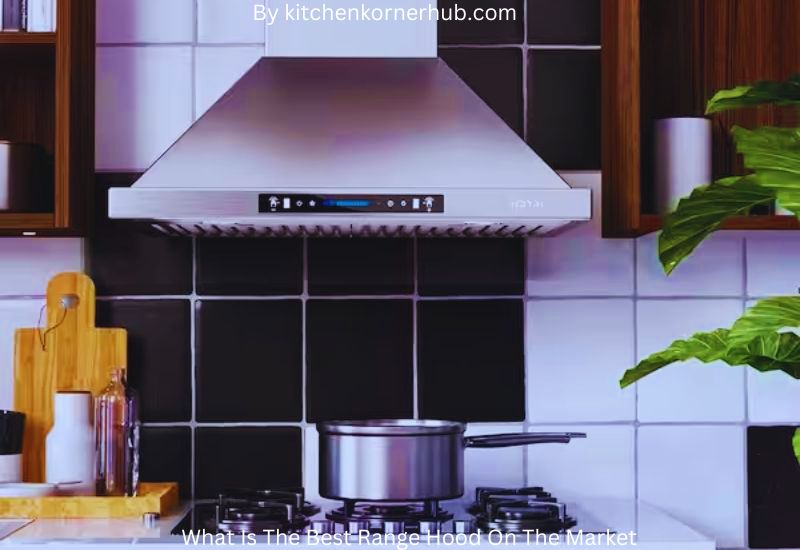
A range hood is a crucial kitchen appliance that not only enhances the aesthetics of your kitchen but also plays a vital role in maintaining air quality and preventing odors, grease, and smoke from spreading.
When searching for a high-quality range hood, several key features should be taken into consideration to ensure optimal functionality and efficiency.
Extraction Power and Airflow:
One of the most important features of a range hood is its extraction power and airflow capacity. A high-quality range hood should have sufficient power to effectively capture and expel smoke, grease, and odors from your cooking area.
Look for models with adjustable fan speeds and a high cubic feet per minute (CFM) rating. This will ensure that the range hood can handle the volume of air generated by your cooking activities, even when dealing with heavy frying or grilling.
Noise Level:
While powerful extraction is essential, you wouldn’t want a range hood that sounds like a jet engine. Opt for a model that balances extraction power with a relatively low noise level. Look for range hoods that have sound-absorbing materials, insulated motors, and variable fan speed settings to control noise output according to your needs.
Filter Quality and Maintenance:
The filters within a range hood are responsible for trapping grease and other particles, preventing them from being recirculated into the kitchen air. High-quality range hoods often come with durable and easy-to-clean filters.
Baffle filters, made from stainless steel or aluminum, are known for their efficiency and easy maintenance. Some models even feature dishwasher-safe filters, making the cleaning process hassle-free.
Lighting:
Adequate lighting is a feature often overlooked in range hoods, yet it significantly impacts your cooking experience. Look for range hoods equipped with energy-efficient LED lighting that illuminates your cooking area effectively.
Ideally, the lighting should be bright, evenly distributed, and designed to enhance visibility while cooking.
Design and Aesthetics:
Beyond functionality, the design and aesthetics of a range hood can complement your kitchen’s overall look. High-quality range hoods come in a variety of styles, from sleek stainless steel to modern glass and minimalist designs.
Consider the size and layout of your kitchen when choosing the right design – wall-mounted, island, under-cabinet – that seamlessly integrates with your kitchen’s architecture.
Comparing Different Types of Range Hoods: Pros and Cons

When it comes to maintaining a clean and odor-free kitchen, a range hood is an indispensable appliance.
However, with a variety of options available, each catering to different cooking styles and kitchen setups, it’s essential to understand the pros and cons of various types of range hoods before making a choice.
Wall-Mounted Range Hoods:
Wall-mounted range hoods are a popular choice, especially for kitchens with a traditional layout. These hoods are attached to the wall above the cooking range and provide effective ventilation by capturing and expelling smoke, odors, and grease. The pros of wall-mounted range hoods include their strong suction power and wide coverage.
They work well for larger cooking spaces and are often visually appealing, adding a professional touch to the kitchen’s aesthetics. However, they might not be suitable for compact kitchens due to their size and installation requirements.
Under-Cabinet Range Hoods:
Under-cabinet range hoods are ideal for kitchens with limited space. These hoods are installed beneath a cabinet directly above the cooking area, making them a space-efficient choice. They offer efficient ventilation, effectively removing airborne particles and maintaining air quality.
One advantage of under-cabinet range hoods is their easy installation, which often requires minimal modifications. However, their compact size can sometimes lead to slightly lower performance compared to larger models.
Island Range Hoods:
Island range hoods are specifically designed for kitchens with island cooktops or ranges. Suspended from the ceiling, these hoods provide ventilation without the need for wall attachments. They offer an elegant and modern look to the kitchen while effectively removing smoke and odors.
Island range hoods also act as a focal point, enhancing the overall kitchen design. On the downside, their installation can be complex and costly, involving electrical and ductwork adjustments.
Downdraft Ventilation Systems:
Downdraft ventilation systems are an innovative alternative to traditional overhead range hoods. These systems are built into the countertop or cooktop and remain concealed when not in use. When activated, they rise to efficiently capture and exhaust fumes and odors downward.
Downdraft systems are an excellent option for open kitchen layouts, where overhead ventilation might obstruct sightlines. They provide a sleek and unobtrusive look, but their effectiveness can be limited, especially for heavy cooking.
Ducted vs. Ductless Systems:
An important consideration for all types of range hoods is whether to choose a ducted or ductless system. Ducted range hoods vent the air outdoors through a duct, ensuring optimal ventilation by expelling pollutants outside.
They are more efficient at removing odors and maintaining air quality. On the other hand, ductless range hoods use filters to recirculate air back into the kitchen after removing grease and odors. They are easier to install but might not be as effective as ducted systems.
Exploring Performance Ratings: Which Range Hoods Deliver the Best Ventilation?
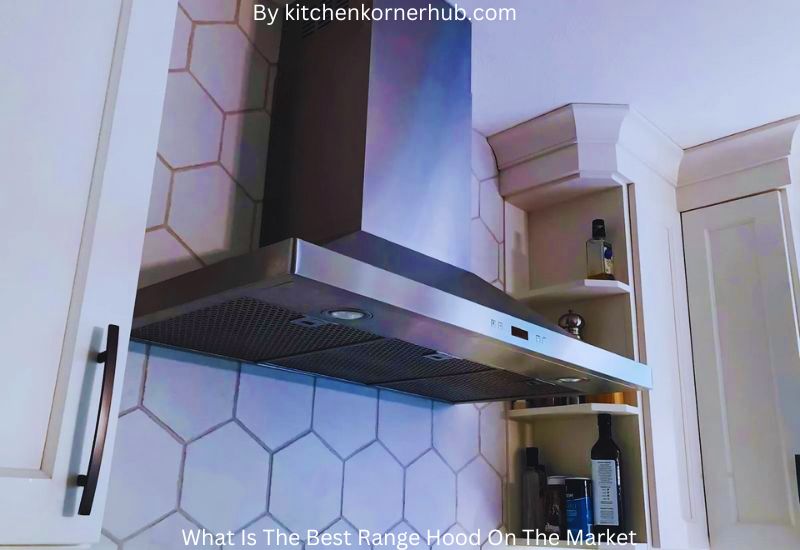
When it comes to maintaining a clean and fresh kitchen environment, a high-quality range hood can be an indispensable tool. A range hood not only adds a stylish touch to your kitchen but also plays a critical role in ensuring effective ventilation by removing smoke, odors, and grease particles generated during cooking.
With a plethora of options available on the market, it’s essential to explore the performance ratings of various range hoods to identify which ones truly deliver the best ventilation results.
Understanding Range Hood Performance Metrics: CFM and Sones
One of the key factors to consider when evaluating the ventilation capabilities of range hoods is the CFM (cubic feet per minute) rating. CFM indicates how much air a hood can move per minute, indicating its ability to efficiently eliminate pollutants.
For optimal results, it’s generally recommended to choose a range hood with a CFM rating that matches the size of your kitchen and the type of cooking you do. However, CFM is not the only metric to consider; the noise level is also crucial. This is measured in sones, where lower values signify quieter operation. Striking the right balance between CFM and noise level is essential for a range hood that performs effectively without creating excessive noise.
Ducted vs. Ductless Range Hoods: Performance Comparison
When exploring range hood options, you’ll come across two main types: ducted and ductless. Ducted range hoods vent air outdoors through a duct system, providing superior ventilation by completely removing pollutants from the kitchen.
On the other hand, ductless range hoods recirculate air through a series of filters to trap grease and odors before releasing it back into the kitchen. While ductless options are easier to install and more flexible in placement, they might not match the ventilation prowess of ducted hoods. Performance-wise, ducted hoods are generally preferred for kitchens where thorough ventilation is a top priority.
Innovative Technologies for Enhanced Ventilation
Advancements in technology have led to the integration of innovative features in modern range hoods, further enhancing their ventilation performance. Heat sensors are now a common addition, allowing the range hood to automatically adjust its fan speed based on the cooking temperature.
This not only ensures efficient ventilation but also minimizes energy consumption. Additionally, some range hoods feature smart capabilities, enabling you to control ventilation settings remotely through a smartphone app. These technological advancements contribute to a more efficient and convenient cooking experience.
Expert Recommendations and Consumer Reviews
While understanding the technical specifications and features of range hoods is crucial, it’s also valuable to consider expert recommendations and consumer reviews. Expert reviews often provide insights into the real-world performance of various range hoods, considering factors
such as airflow efficiency, noise levels, and build quality. Consumer reviews, on the other hand, offer firsthand experiences and opinions, shedding light on long-term durability and satisfaction. By combining expert advice with the voices of actual users, you can make a more informed decision on which range hood is likely to deliver the best ventilation for your kitchen.
Conclusion
In the ever-evolving market of range hoods, determining the ultimate best entails a delicate balance between features, performance, and individual needs. While brand reputation and advanced technologies play a significant role, personal kitchen requirements also influence the choice. Ultimately, the best range hood is one that effectively removes smoke, odors, and pollutants, operates quietly, and complements the kitchen’s aesthetics seamlessly. Considering these factors, users must carefully evaluate options and prioritize aspects that align with their preferences, resulting in a range hood that harmonizes both functionality and style in their culinary space.
Frequently Asked Question(What Is The Best Range Hood On The Market)
What brand is the best range hood?
Determining the best range hood brand can be subjective, as it often depends on your specific needs and preferences. However, some reputable and well-regarded brands in the range hood industry include Broan, Zephyr, and KitchenAid.
It’s essential to consider factors like the features you require, the design that complements your kitchen, and the overall reputation of the brand for quality and customer satisfaction.
Which type of kitchen hood is best?
The best type of kitchen hood depends on your kitchen layout, cooking habits, and ventilation needs. Wall-mounted chimney hoods are popular for their stylish appearance and efficient smoke removal.
Under-cabinet hoods are space-saving options, while island hoods are ideal for kitchens with cooktops placed on an island. Ducted hoods are more effective in removing odors and smoke, while ductless hoods can be suitable for spaces where duct installation is challenging.
How do I choose a new range hood?
Choosing a new range hood involves considering several factors. First, measure your cooking area to determine the appropriate size. Evaluate the airflow capacity of the hood, measured in cubic feet per minute (CFM), to ensure it can effectively handle your cooking needs.
Decide between ducted and ductless options based on your kitchen’s ventilation setup. Look for features like multiple fan speeds, lighting, and noise levels. Lastly, select a design that complements your kitchen’s aesthetics.
How many years does a range hood last?
The lifespan of a range hood can vary depending on factors such as usage frequency, maintenance, and the quality of the hood. On average, a well-maintained range hood can last around 10 to 15 years.
Regular cleaning of filters, fans, and the exterior can extend its longevity. It’s essential to follow the manufacturer’s maintenance guidelines and address any issues promptly to ensure your range hood functions optimally over its lifespan.
How many dB is a quiet range hood?
The noise level of a quiet range hood typically falls within the range of 50 to 65 decibels (dB). This range is considered relatively quiet, especially when compared to louder kitchen appliances like blenders or garbage disposals.
However, it’s important to note that the specific noise level can vary from one range hood model to another, so it’s a good idea to check the product specifications for the exact dB rating. Quieter range hoods are often equipped with features like sound insulation and variable fan speeds to minimize noise during operation.
Are all range hoods noisy?
Not all range hoods are noisy. The noise level of a range hood depends on various factors, including its design, fan speed, and motor power. As mentioned earlier, there are quiet range hood models available that are designed to operate with minimal noise. These hoods are particularly useful for open kitchen layouts or homes where noise control is essential.
However, some range hoods may produce more noise, especially if they have powerful fans or are not equipped with noise-reduction features. When choosing a range hood, it’s a good idea to consider your specific needs and preferences regarding noise levels to ensure a comfortable and peaceful cooking environment.

